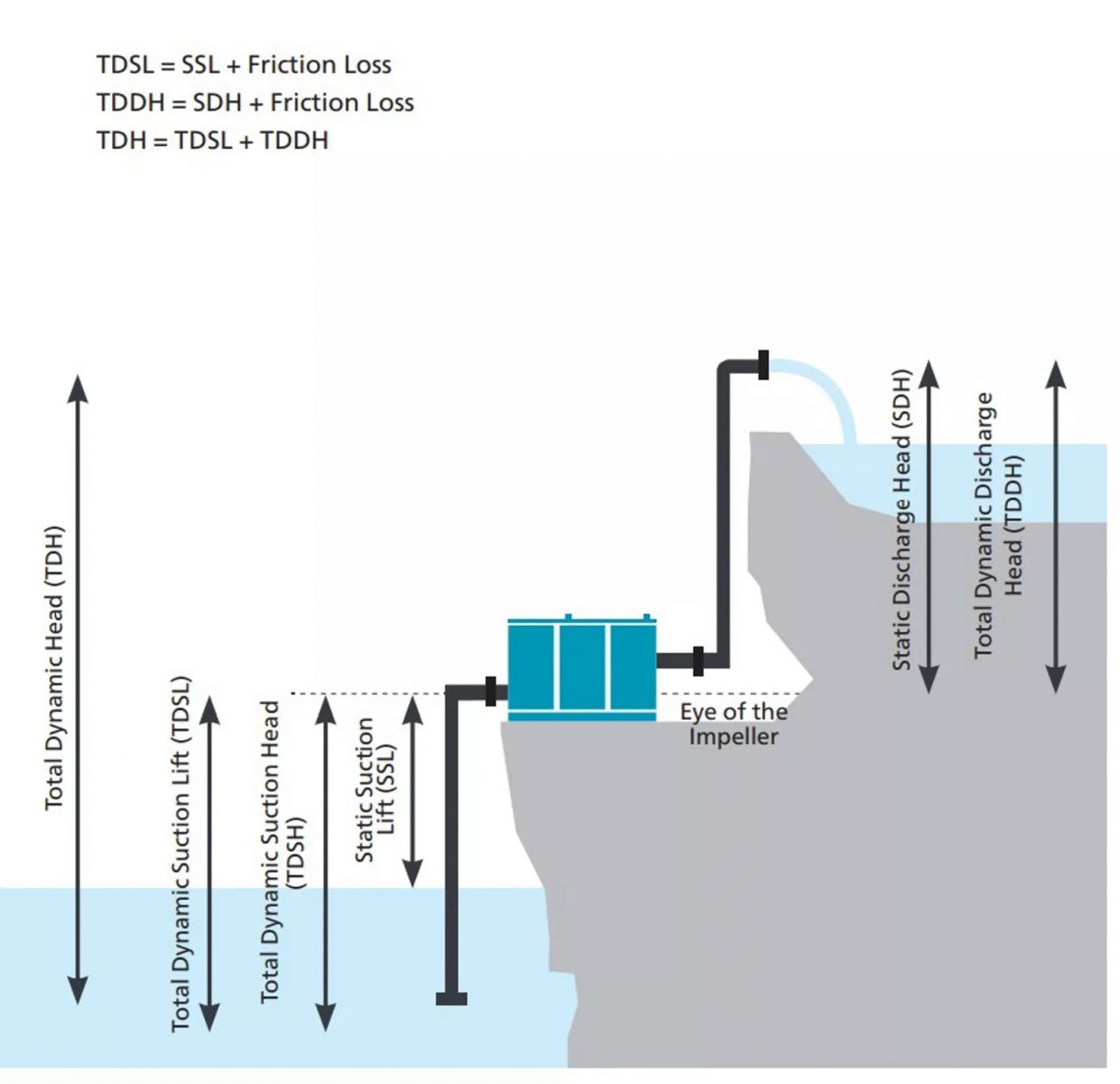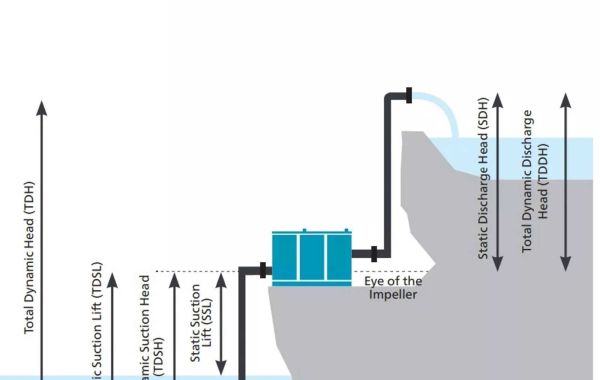One of the most misunderstood physical characteristics of a pump is the concept of head. It’s related to pressure, but how, exactly? To start with, head is the height at which a pump can raise fluid up and is measured in metres or feet. We use it when specifying centrifugal pumps because their pumping characteristics tend to be independent of the fluid's specific gravity, often referred to as relative density.
Avoid confusion: head vs pressure
Head can sometimes be confused with pressure, purely because there is a close relationship between the two parameters but there is one fundamental difference.
Head is fluid independent, that is, regardless of the fluid's relative density, the pump will lift it to the same height. Therefore, it does not matter whether the fluid is water or heavy sludge.
Pressure, on the other hand, is fluid dependent and is affected by gravity. Therefore, the same head will generate a different pressure depending on the fluid's relative density.
Suction Levels
Suction conditions are also relevant to the pump head If the suction level is lower, the head measured will be less, and vice versa. The pump's motor converts electrical energy into mechanical energy, which the pump then imparts into the fluid as pressure. Raising or lowering the suction level therefore adjusts the potential pressure of the liquid. The more pressure the pump delivers, the higher the head will be.
Total head (total dynamic head)
Because pump manufacturers can not know the suction level parameters, they calculate the pump's total head . To do this, they subtract the total suction head, which is measured as height above sea-level, from the total discharge head. The next important consideration is how much friction needs to be taken into account. Friction loss depends on the length and size of the pipework, bends, and gate valves, through which the fluid flows. The sum of the head and friction loss will give total head. Total head is a more reliable indicator of pump performance than pressure because it indicates what the pump can do regardless of the suction conditions. The total head combined with your flow requirement will allow you to choose the right pump.
Pump performance
The performance of the pump at a certain speed (RPM) can be found in the manufacturer's datasheet displayed as the flow rate (Q) versus head curve (figure 2). At the maximum head (circled in red), the pump has zero flow or little. This is often referred to as the shut-off head. When looking for a pump, ensure that the head provides a sufficient flow rate. For example, if you require the pump to operate at 180m ³/ h( 780USGPM ), the maximum head would be 26m (86ft.) This selection procedure only applies to centrifugal pumps. For piston pumps, which can provide more pressure, they are selected based on flow only. The units for flow rate are US gallons per minute (USgpm) in North America. However, in countries that use the metric system, the units can vary; litre per minute (l/min), metre cubed per hour (m ³/ h) and litre per second (l/s). So, be sure to check your units during the selection process.
Conclusion
The total head parameter is crucial when buying or renting the right pump for your application. It gives an accurate indication of the pump's performance, regardless of other contributing factors such as suction level and fluid density.
Search
Popular Posts








